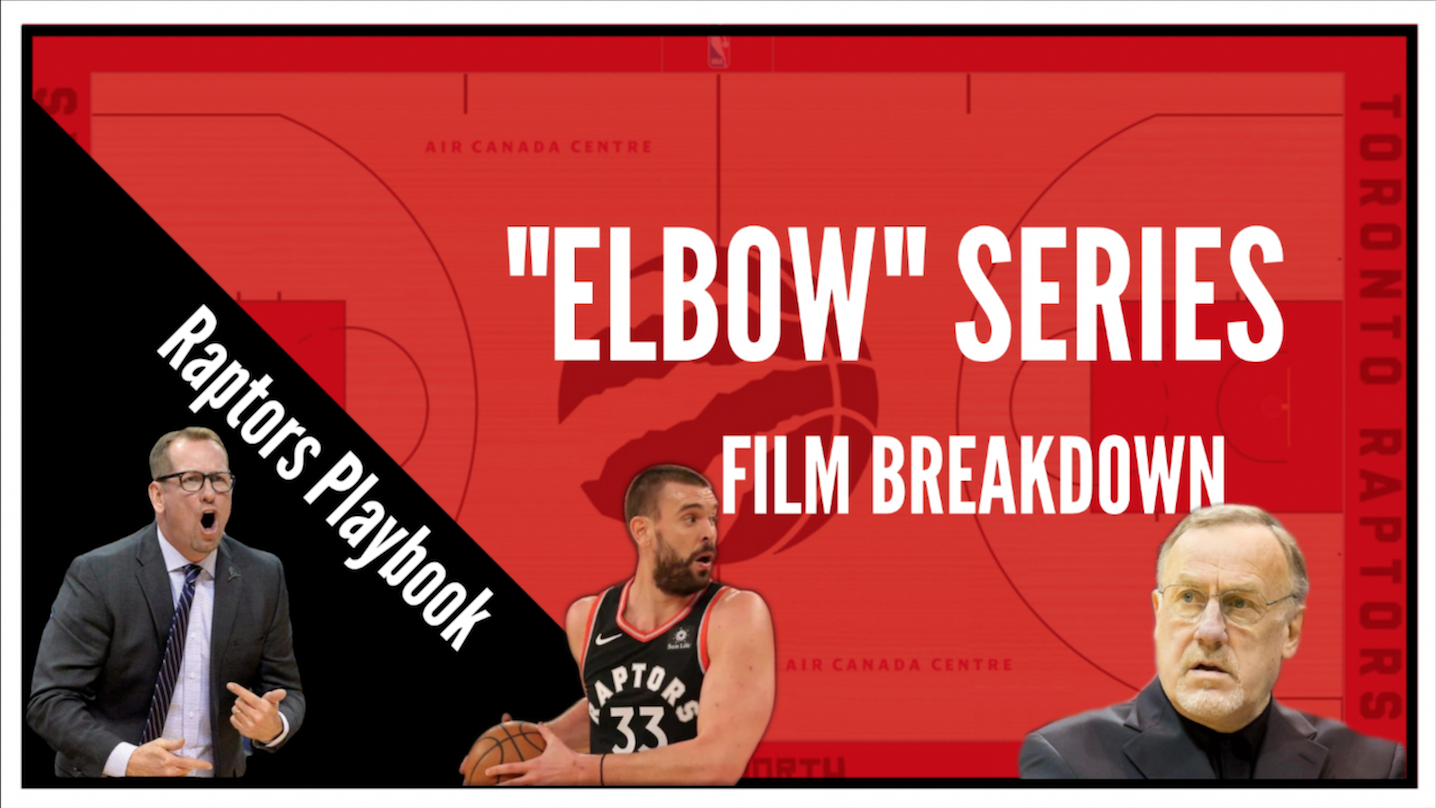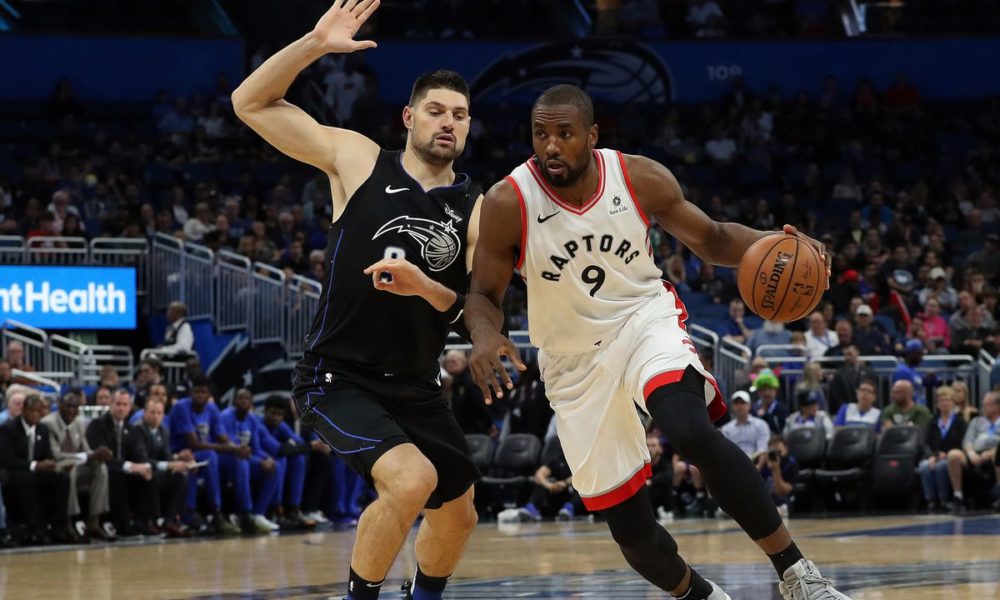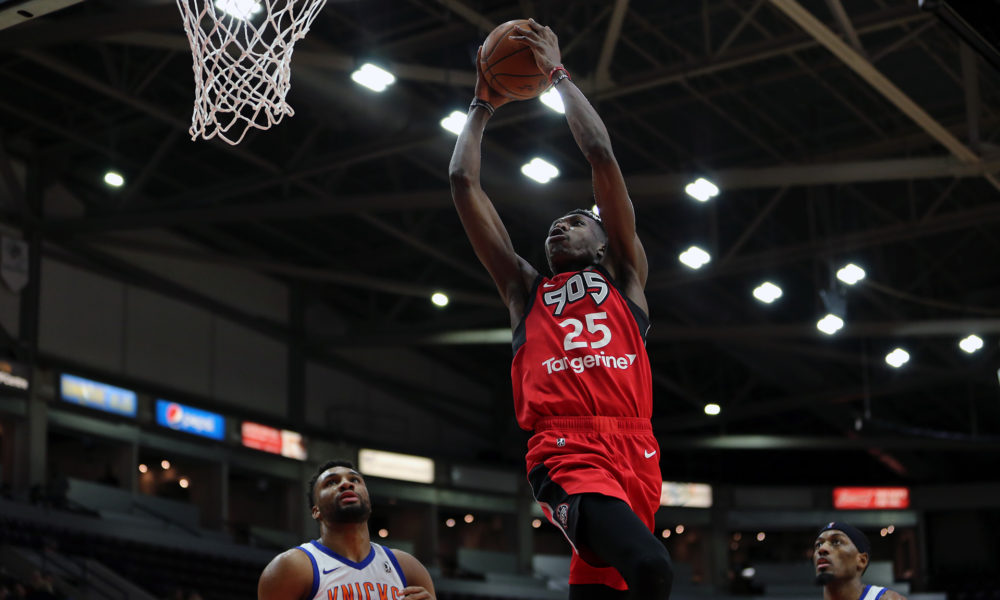Raptors Playbook: “Elbow” Series
Over at the Raptors Playbook YouTube channel (@RaptorsPlaybook on Twitter), I am breaking down the X’s & O’s of the Toronto Raptors. This week, we’ll focus on their “Elbow” Series – a read-and-react set that was popularized by Rick Adelman as the “Corner Offense”. Watch the video embedded below alongside the summary written, and remember to follow and subscribe to never miss out on a video.
Option 1: “Low Split” – Starting at 0:10
Essentially all options in this set start with a ball handler dribbling to the wing (free-throw line extended area along the sideline) and making an entry pass to the player on the Strong Side Elbow. Since his arrival, the Elbow facilitator has predominantly been Marc Gasol.
Many teams have historically used a variety of actions out of this set, but Toronto emphasizes the “Low Split”. Once the Elbow player has the ball, the entry passer along the Wing will then engage in a read-and-react screening action with the player in the deep corner — Low Split. The latter will attempt to curl the screen and cut into the paint for a quick pass from the Elbow player.
If this pass is unavailable, the deep corner player will continue their cut through the paint and the Elbow player will pass to the original Wing player. From there, a simple ball screen or DHO can occur.Often times, the defense will “top-lock” the deep corner player and overplay them as to disallow them from using the “Low Split” screen. If this occurs, the deep corner player will make a back cut through the paint and the same DHO/pass-and-chase action will occur.
This set is very adaptable to all kinds of defensive coverages and even works against teams that like to switch. The read-and-react nature of the set forces players to be engaged to take advantage of these opportunities, but quick slips of the “Low Split” screening action can produce easy layups as well.
Option 2: Down Screen & DHO – Starting at 3:07
Toronto will sometimes opt against the “Low Split” and use a similarly effective action, wherein the deep corner player does not curl the screen and instead uses the screen to gain momentum for a DHO with the Elbow player. This forces their defender to chase from behind them and creates typical ball screen advantages (go over and ball handler drives to the rim, go under and ball handler pulls up for a jumper, switch and there is a mismatch, double the ball handler and the screener rolls freely to the rim, etc…). Norman Powell is wonderful at using this action to his advantage and is able to burst to the rim after turning the corner from the DHO, protecting the ball like a Running Back hitting the hole, and finding a seam to the rim for a layup.
Option 3: “Lag Pass” – Starting at 4:20
The Corner Offense (Toronto’s “Elbow” series) shares many similarities to The Triangle – one of which being the “moment of truth” principle. Simply put, when the primary ball handler is dribbling up the wing in hopes of delivering an entry pass to the player at the Elbow, a moment occurs in which all of the other 4 offensive players will move in accordance to the decision they make.
In the event that the entry pass to the Elbow is highly contested, the ball handler has the choice of making a “Lag Pass” to the Weak Side of the floor to the trailing guard that is 1 step behind them. Toronto is rarely forced into this option due to the lack of frequency in which they utilize this set. However, when they are forced to make the “Lag Pass”, a quick step-up ball screen will occur.



